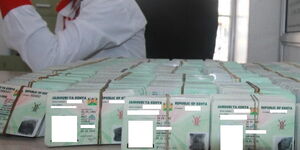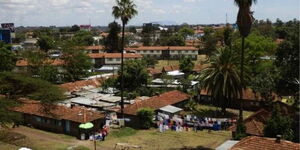Over 12 million people living in the larger Rift Valley region face a slow but dangerous natural calamity that most are unaware of and its impacts on the country's economy and wildlife.
The rising water levels on the lakes in the region have disturbed the people's lifestyles and, in some cases, forced the government to release emergency funds to help relocate the affected communities in the vast Rift Valley region.
Lakes Baringo, Bogoria, Naivasha, Nakuru and Magadi are in the elongated lowland region formed by the tectonic plates moving apart, creating the Rift Valley.
Speaking to Kenyans.co.ke, University of Nairobi Prof Nzioka Muthama explained that the rising levels even by a single meter, pose a huge danger to the environment.
Nzioka, who is an applied Meteorologist and a Registered Lead Environmental Impact Assessment expert, explained that rising water levels in the lakes within the Rift Valley region cause mass displacement of people.
"The water increase encroaches the riparian land pushing the local communities away. In extreme cases, it causes mass displacement of people, which compels the government to spend millions of shillings to cushion the communities," Nzioka told Kenyans.co.ke.
Nzioka added that the rising water levels destroy infrastructures such as roads, hospitals, police stations, schools and other social amenities within the affected regions.
In 2019, government spokesperson Col (Rtd) Cyrus Oguna observed that at least 75,987 households and 61,723 hectares of land were adversely affected by the rising water levels within the lakes in the Rift Valley region.
Source of livelihoods and large-scale farms have also been forced to either shut down or downscale their operations following the impact of the natural calamity.
The rising water levels have also taken a toll on hotels near Lake Bogoria and Naivasha, which have since been forced to shut down as their investments were partially submerged.
In some cases, several schools have been forced to shut down or relocate after the lake waters found their way into classrooms.
According to Nzioka, rising water levels further destroy the ecosystem. This is manifested in the reduced number of flamingoes as the growth of the algae they feed on has been affected by the change in the alkalinity in the lakes.
"Rising water levels encroach lands causing waterlogging which affects crops. This affects the entire ecosystem where farmers cannot make use of their arable land.
"It explains why some of the regions face acute food shortages that further lead to hunger problems in the country," Nzioka explained.
The rising water levels are caused by the transfer of water and energy between the land surface and the lower atmosphere (hydro-meteorology).
Climate change has led to increased moisture availability, causing a rise in rainfall and discharge of the rivers feeding the lakes.
It has also led to more soil in runoffs occasioned by land-use changes that have increasingly added to the siltation of the lakes.
To make sure the situation does not get out of hand, causing massive destruction, President Uhuru Kenyatta's government, in collaboration with United Nations Development Programme (UNDP), constituted a multi-agency technical team. The team was tasked to probe the extent of the impact occasioned by the rising water levels.
The report confirmed the government's data that as many as 75,987 households from 13 counties within the region were displaced.
The report - released in 2021 - further indicated that the government would require Ksh17.9 billion to mitigate the damages caused by rising water levels on lakes along the Rift Valley region.
UNDP report further confirmed that the rising water levels have led to loss of lives, outbreaks of diseases, injuries, security concerns and environmental degradation.
This, in return, has sparked human-wildlife conflict and legal battles occasioned by land partially submerged by the rising waters.
With the lake levels continuing to increase, relevant stakeholders have called for immediate interventions to cushion over 12 million people from the Rift Valley region whose lives are at risk.
The proposed measures include immediate humanitarian assistance, climate change awareness campaign, rehabilitation, relocation, and restoration of damaged infrastructure.












